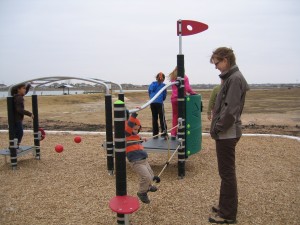March 30, 2011 GUEST BLOG POST by Melissa VanAlstyne
 “I have work to catch up on”, “I’m not hungry”, “I’m going out”, we have all heard these excuses when it comes to sitting down to a family meal and often it seems easier to just forgo it all together. However, research is proving just how big of an impact family meals do have. Not only is sitting down to a family meal a good way to keep the family connected but it also has a number of health benefits as well, one of which is promoting healthy eating habits among adolescents.
“I have work to catch up on”, “I’m not hungry”, “I’m going out”, we have all heard these excuses when it comes to sitting down to a family meal and often it seems easier to just forgo it all together. However, research is proving just how big of an impact family meals do have. Not only is sitting down to a family meal a good way to keep the family connected but it also has a number of health benefits as well, one of which is promoting healthy eating habits among adolescents.
According to a journal article in the Journal of Adolescent Health [full citation below] having a family meal can help to detect early signs of disordered eating as well as help prevent disordered eating from ever beginning. Having a family meal allows adolescents to see their parents engaging in healthy eating habits and therefore model their own eating habits after them. In addition, eating together allows parents to monitor their children’s diet which allows them to detect signs of disordered eating earlier.
While simply prioritizing sitting and eating together is good in and of itself, family meals should be times that parents and children value and find enjoyable. This means keeping discussion at the meal free from conflict around food or other issues, thus making the meal something the family looks forward to each day.
While life is undoubtedly extremely stressful and busy and finding time to sit down and eat together may seem a daunting task, the benefits of making sure to prioritize this family time cannot be overstressed. Adolescents who report more frequent and enjoyable family meals have been repeatedly found to be at a decreased risk for engaging in unhealthy weight control behaviors. So find a time that works for your family, sit down, pass the chicken and enjoy!
Fulkerson, J. Neumark-Sztainer,D. Story, M. Wall, M.(2004).Are Family Meal Patterns Associated with Disordered Eating Behaviors Among Adolescents? Journal of Adolescent Health,35. 350-359







 Tens of thousands of us develop blood clots each year. Sometimes, they start as a pain in your thigh. Often, the cause is too little movement for too long a period of time. Hence, the need to take breaks and walk around if you are traveling in a car. Get up and move about on the plane or train or bus. Stretch your toes forward from your ankles when you are sitting and then pull your toes back. Repeat half a dozen times.
Tens of thousands of us develop blood clots each year. Sometimes, they start as a pain in your thigh. Often, the cause is too little movement for too long a period of time. Hence, the need to take breaks and walk around if you are traveling in a car. Get up and move about on the plane or train or bus. Stretch your toes forward from your ankles when you are sitting and then pull your toes back. Repeat half a dozen times. A couple of weeks before setting out on the Thanksgiving trip to hike in the New River Gorge area and dine with family at a bistro in Asheville, North Carolina, John and I got our flu shots. This year, the shot combines the swine flu shot with the ‘regular’ flu shot so that you will not be offered two…but instead get two for the price of one. I hadn’t paid much attention to this fact until arriving for the appointment to get the shot.
A couple of weeks before setting out on the Thanksgiving trip to hike in the New River Gorge area and dine with family at a bistro in Asheville, North Carolina, John and I got our flu shots. This year, the shot combines the swine flu shot with the ‘regular’ flu shot so that you will not be offered two…but instead get two for the price of one. I hadn’t paid much attention to this fact until arriving for the appointment to get the shot. Vaccine information sheets are not quite the same as informed consent documents for surgery. We don’t have to sign a vaccine information sheet. Why? I suppose because so often, shots are being given to lots of people in a small span of time.
Vaccine information sheets are not quite the same as informed consent documents for surgery. We don’t have to sign a vaccine information sheet. Why? I suppose because so often, shots are being given to lots of people in a small span of time. November 22, 2010
November 22, 2010 November 16, 2010
November 16, 2010 Warning labels provide another way that policmakers are trying to assure that we have information to protect our health. Warning labels are designed to get our attention with a signal work about a hazard: caution, danger, or often–warning. The label also includes a statement about what makes the product risky. For example, if it contains alcohol, then it may be flammable. If it contains an herb, it may interact with prescribed medication or the drug to be used for your medical procedure. The label may also include a way to avoid the harm, such as talking with your doctor about using the product. And it may include content about outcomes that could occur, although these may be worded abstractly, such as–“adverse reaction”–meaning what exactly?
Warning labels provide another way that policmakers are trying to assure that we have information to protect our health. Warning labels are designed to get our attention with a signal work about a hazard: caution, danger, or often–warning. The label also includes a statement about what makes the product risky. For example, if it contains alcohol, then it may be flammable. If it contains an herb, it may interact with prescribed medication or the drug to be used for your medical procedure. The label may also include a way to avoid the harm, such as talking with your doctor about using the product. And it may include content about outcomes that could occur, although these may be worded abstractly, such as–“adverse reaction”–meaning what exactly?